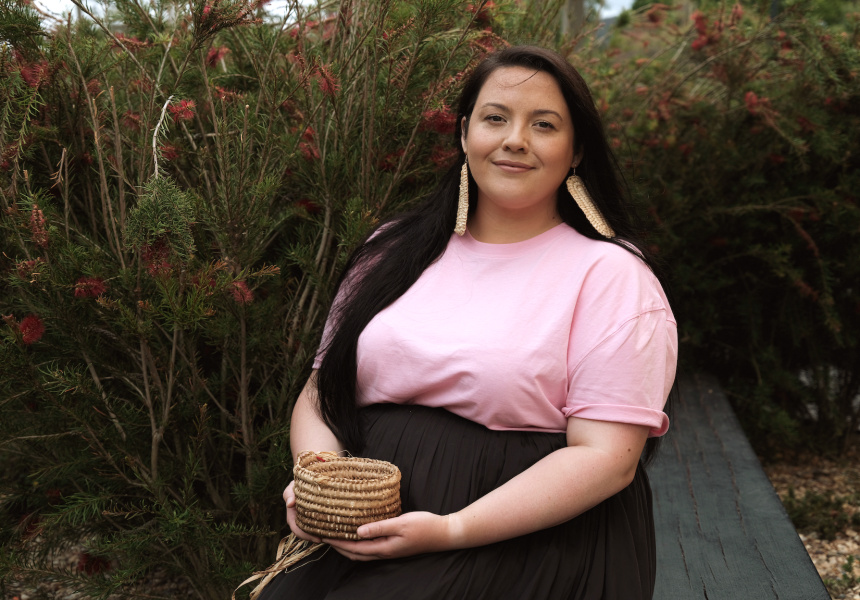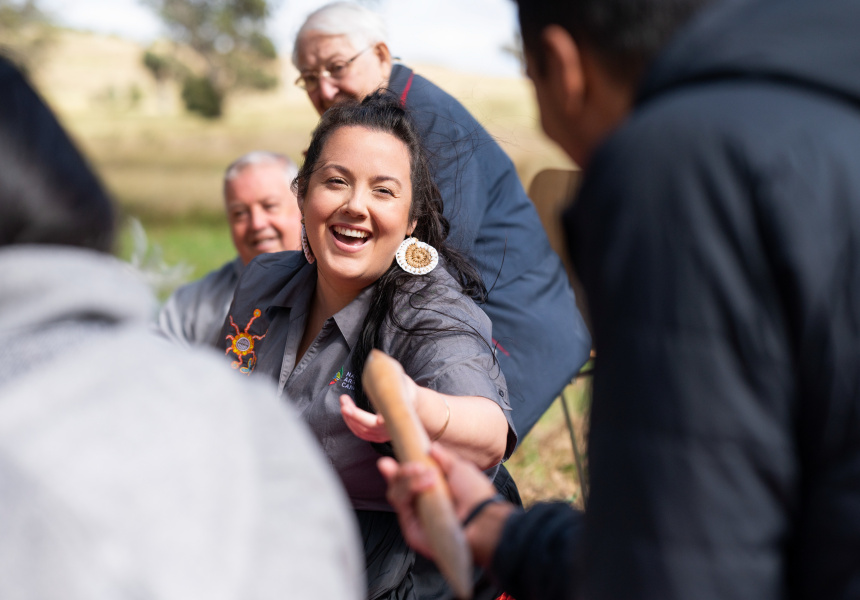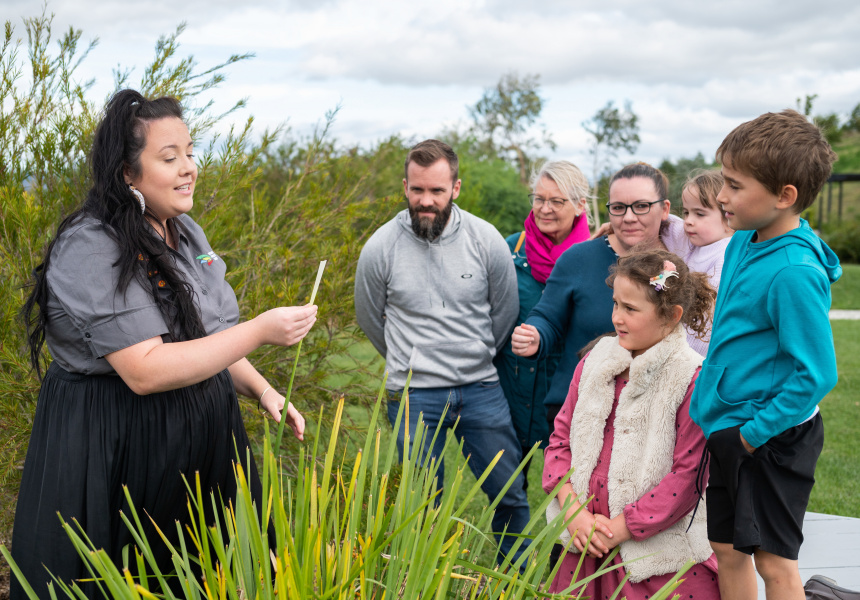Ngunnawal Country (Canberra) has a cultural history that stretches back thousands and thousands of years. Here’s how to fully engage with all the capital has to offer. Fibre artist Jessika Spencer is a Wiradjuri woman, from the sandhills of Narrandera in NSW’s Riverina region, who now lives on Ngunnawal Country. The region’s mountains influence the texture of her weaving work, while its vivid hues inspire her use of colour – particularly the sunsets.
“The colour palette of Ngunnawal Country blows me away,” Spencer says. “This land is completely reflected in my work.”
Spencer moved to Ngunnawal Country when she was eight, and is now very much part of its fabric and community. Here is her list of top sites to visit for an engaging cultural experience.
Never miss a moment. Make sure you're subscribed to our newsletter today.
SUBSCRIBE NOWGubur Dhaura
This red ochre site near the suburb of Franklin is of huge cultural significance to the Ngunnawal people, and the region’s best example of a traditional ochre quarry. Today it functions as a community park and a place of learning, located just a 20 minute drive north of the city centre.
“It’s such a powerful site and so well looked after. The Traditional Owners do cultural burns and the native plants are growing really strong,” Spencer says.
She recommends taking a stroll on the walking track that loops around the park and the Mulanggari Grasslands Nature Reserve. “It’s a beautiful walk on elevated ground surrounded by native plants and eucalypts,” she says.
Lake Ginninderra District Park
A beautiful park and lake within 20 minutes’ drive north-west of the city centre, it’s an ideal spot for a picnic on a sunny afternoon. The lake has a sandy beach for swimming, a boat ramp and plenty of space among the trees and lawns to spend the afternoon.
The flora is another drawcard for Spencer and other keen fibre collectors. “It’s my absolute favourite place,” she says. “The landscaping and new native gardens are beautiful.”
If you’re interested in weaving, look out for natives around the lake with long, strappy leaves, such as lomandra and sedge. But Spencer says to reach out to local Elders before taking any plants. “They’ll happily guide you.”
Ngala Tours at the National Arboretum Canberra
Spencer is the Indigenous education officer at the National Arboretum Canberra, a 250-hectare setting for a mosaic of forests and important trees from Australia and around the world. She also leads Ngala Tours, running workshops at the arboretum that give visitors a gentle introduction to First Nations’ skills and culture, as well as a weaving tour.
“It’s a safe space for people to ask questions and learn both traditional and contemporary weaving techniques in a really friendly environment,” she says.
Spencer recommends taking the Ngala Tours Discover Art and Country Tour, which combines a visit to the arboretum with a trip to the only Aboriginal-owned art gallery in Canberra, the Burrunju Art Gallery.
“As well as having a focus on art, this tour delves into the world of bush tucker,” says Spencer. “We also have a cultural interpretation kit, filled with cultural artefacts like spears, digging sticks and boomerangs. Everything here is about giving people gentle, immersive experiences, and understanding of First Nations’ culture.”
Black Mountain Nature Reserve
Some of Spencer’s most formative cultural learnings took place at Black Mountain (known as Galambary to the Ngunnawal people), the 812-metre-high conservation reserve on the northern shores of Lake Burley Griffin.
“I’m so lucky to have become connected with so many powerful Indigenous people who’ve given me such a strong understand of the Country,” she says. “It’s a special place because it’s where I was gifted so much knowledge.”
The mountain has a huge abundance of birdlife and native plants. If you’ve ever wondered what the country might have looked like before the bush was cleared, Black Mountain is a fine example. Various trails span the mountain, suitable for different levels. The 5.4-kilometre summit trail is the pick of the walks if you want to raise a sweat and get a great view of the city and Lake Burley Griffin. The shorter, two-kilometre woodland walk is less strenuous and a good choice for a hot day, as the shady forests of woodland gum trees provide respite from the sun as well as a canopy for native birds.
National Museum of Australia First Australians Exhibition/First Nations Gallery
Spencer describes the National Museum of Australia as a grounding place – somewhere she’s visited since she was a young girl, and has always returned to.
“I go there to be reminded of why I do what I do,” she says. As an artist, Spencer finds the traditional artefacts – including armbands, baskets and boomerangs – are particularly moving, and tell the story of tens of thousands of years of continuous living culture. “The space devoted to the display is huge, and it’s very beautiful. It’s such a special place.”
Spencer’s last message for visitors to is to be respectful and “leave the Country as you found it”.
This article is produced by Broadsheet in partnership with Visit Canberra.




